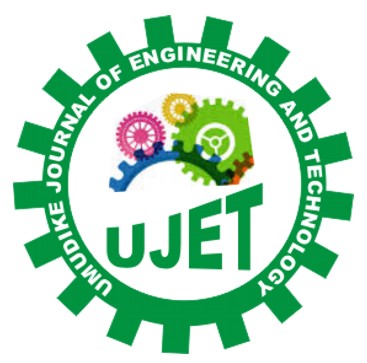|
Igwe, J. E.
Department of Mechanical Engineering, Michael Okpara University of Agriculture, Umudike, Abia State, Nigeria.
Okoro, C.
Department of Mechanical Engineering, Michael Okpara University of Agriculture, Umudike, Abia State, Nigeria.
Okoro, U. I.
Department of Mechanical Engineering, Michael Okpara University of Agriculture, Umudike, Abia State, Nigeria.
Mba, B. C.
Department of Mechanical Engineering, Michael Okpara University of Agriculture, Umudike, Abia State, Nigeria.
Igboayaka, E. C.
Department of Mechanical Engineering, Michael Okpara University of Agriculture, Umudike, Abia State, Nigeria.
ABSTRACT
The energy analysis of a fabricated waste plastics
pyrolysis plant for a small-scale diesel oil recovery has been completed. The
thermal analysis, which is based on the concept of the first law of
thermodynamics, was applied to plant components: the reactor, catalytic
cracker, diffuser, and air condenser. The ratio of waste plastics to catalyst
during a pilot test in the plant was 2:1. The reaction temperature and
production time for cracking of 2 kg of mixed waste plastics (Polyethylene
(PE), Polypropylene (PP), and Polystyrene (PS)) were 360oC and 54 minutes,
respectively, at plant mass flowrate of 0.00135 kg/s. The data obtained from
each pilot batch test were fitted on the energy equations to determine the
extent of improvement. The reactor, catalytic cracker, diffuser, and air-condenser
thermal efficiencies of the plant were 85.75, 82.17, 80.4, and 70.19%,
respectively, and the total thermal efficiency of the plant was obtained to be
9.045%. The plant components' thermal efficiencies increased as the reactor
inlet temperature increased to 500oC, except for the air-condenser component
that maintained a downward trend at 480oC because, at high temperatures, oil
production is reduced. The total thermal efficiency of the plant increased with
a corresponding increase in pyrolysis temperature.
Keywords: energy analysis, thermoplastics, pyrolysis plant components, production time, mass flowrate, and efficiencies
https://doi.org/10.33922/j.ujet_v11i1_4
|
View: 209 | Download: 40
Published
Monday, February 03, 2025
Issue
Vol. 11 No. 1, June 2025
Article Section
GENERAL
The contents of the articles are the sole opinion of the author(s) and not of UJET.
|


